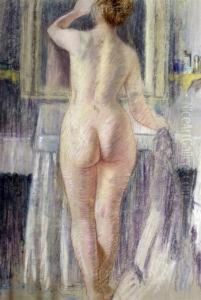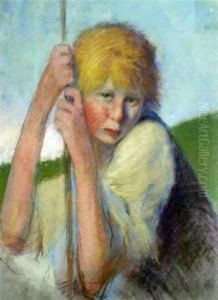Paul Seifert Paintings
Paul Seifert was a German-American artist known for his detailed and vivid watercolor paintings, primarily of rural landscapes and farmsteads. Born in 1840 in Wöhrden, Duchy of Holstein (now part of Germany), Seifert emigrated to the United States in the late 19th century, eventually settling in the region around Richland County, Wisconsin. His precise birth date is not well-documented, but his emigration followed the broader pattern of German immigration to the United States during that time, which was spurred by economic opportunities and sometimes political unrest in Europe.
Seifert's artistic career is noteworthy for his documentation of the American Midwest. He is not widely known in the canon of art history, and his work was largely unrecognized by the art establishment during his lifetime. Instead, Seifert worked primarily as a folk artist, and his clients were typically local landowners and farmers who commissioned him to create paintings of their properties. This work has been seen by historians and collectors as an important record of the architecture and agrarian landscape of the time.
Seifert's paintings are characterized by their attention to detail, vibrant colors, and a somewhat naïve or folk-art style. He would often include detailed renderings of the buildings, livestock, and people found on the farms he depicted. Despite their folk-art classification, his works provide an invaluable glimpse into the rural American life of the late 19th and early 20th centuries.
Paul Seifert continued to paint until his death in 1921. His work has since gained recognition for its historical value and its unique aesthetic. Today, his paintings can be found in various local historical societies, museums, and private collections, particularly in the Wisconsin area where he lived and worked. Seifert's legacy lies in his contribution to the visual record of an era and a community, offering insights into the cultural and economic landscapes of rural America during his lifetime.

